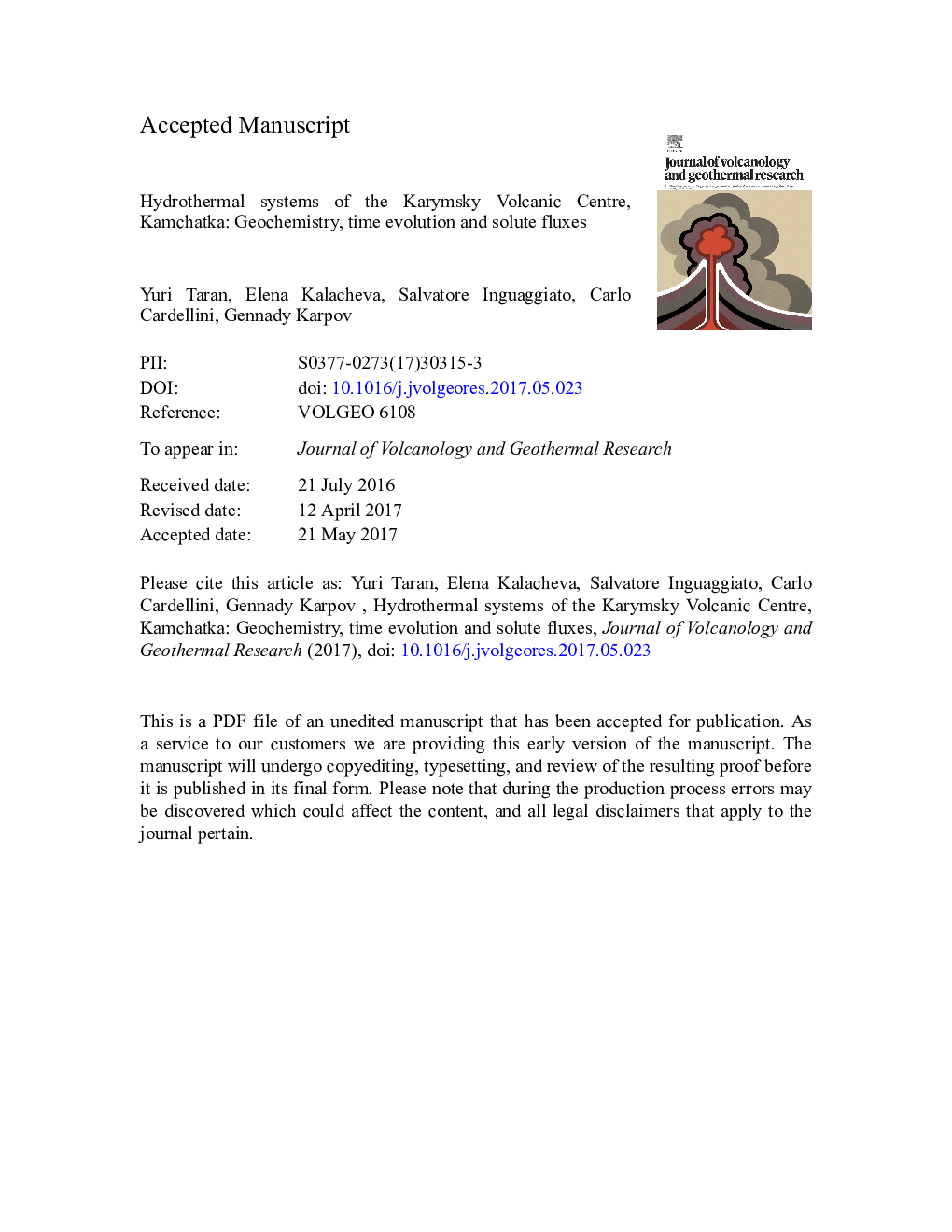| Article ID | Journal | Published Year | Pages | File Type |
|---|---|---|---|---|
| 8911478 | Journal of Volcanology and Geothermal Research | 2017 | 47 Pages |
Abstract
Karymsky Volcanic Centre (KVC) at the middle of the frontal volcanic chain of the Kamchatka arc consists of two joined calderas (Akademii Nauk and Karymsky volcano) and hosts two hydrothermal systems: Akademii Nauk (AN) and Karymsky (K). The AN is a typical boiling system, with Na-Cl waters (TDS ~ 1 g/l), low gas content (CO2-N2), with deep calculated temperatures of ~ 200 °C. In contrast, springs of the K system have lower temperatures (up to 42 °C), strong gas bubbling, TDS ~ 2.5 g/l, and are enriched in HCO3â and SO42 â, with Mg2 + as the main cation. There are two intriguing characteristics of the K field: (i) their CO2-rich gas (> 97 mol%) has the highest 3He/4He ratios ever measured for hydrothermal systems in Kamchatka of ~ 8 Ra (where Ra = 1.4 Ã 10â 6) and (ii) their thermal waters have an unusual cation composition (Mg > Na > Ca). After the 1996 sublimnic eruption within AN caldera, new hot springs appeared close to the eruption site. In this paper we synthesize all published and new geochemical data sets. The Karymsky Lake and post-1996 new thermal springs demonstrate exponential decreases in their main dissolved species, with a characteristic time of 5 to 8 years. The chemistry of AN and K springs did not change after the eruption. However, the concentration of chloride in the lake water approached ~ 35 mg/l, compared with a background of 8-11 mg/l revealing a possible new source of hot water within the Karymsky Lake. All thermal fields of the KVC are drained by the Karymsky River with an outflow rate at the source of ~ 2 m3/s (flowing out from Karymsky Lake) and at the exit from the Karymsky caldera of ~ 4.5 m3/s. Using the measured solute fluxes at the source (AN springs) and at the exit (AN + K springs) the natural heat flux from the two systems can be estimated as ~ 67 MW and ~ 120 MW, respectively, and â¥Â 20 t/d for the chloride output from both systems.
Related Topics
Physical Sciences and Engineering
Earth and Planetary Sciences
Geochemistry and Petrology
Authors
Yuri Taran, Elena Kalacheva, Salvatore Inguaggiato, Carlo Cardellini, Gennady Karpov,
